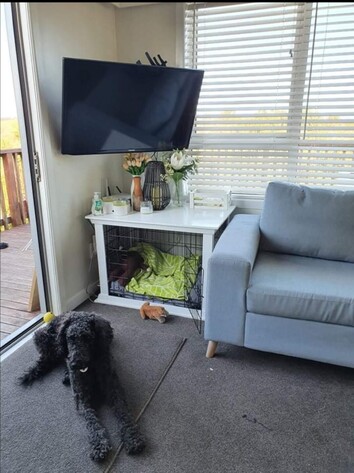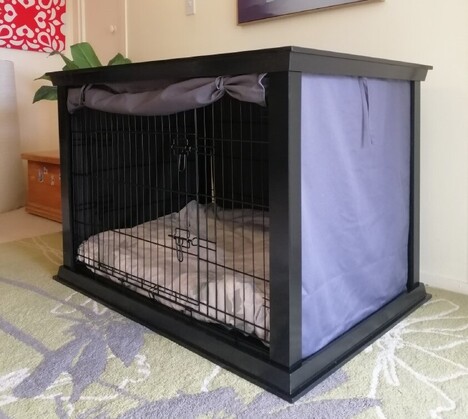Setting up a comfortable and safe dog crate is essential for providing a secure and cozy space for your furry friend. Here are some steps to help you set up a crate that your dog will love:
Select a suitable location: Find a quiet and calm area in your home where you can place the crate. Dogs are social animals, so it's ideal to keep the crate in a room where the family spends most of their time.
Choose the right size crate: Select a crate that is appropriate for your dog's size. It should be large enough for your dog to stand up, turn around, and lie down comfortably. READ: How to choose a crate that is the right size for your dog? A Guide for NZ Dog Owners
Line the crate with bedding: Place a comfortable bedding material in the crate to provide cushioning and warmth. Options include blankets, towels, or dog-specific crate pads. Ensure the bedding is clean and regularly washed.
Introduce familiar scents: Dogs find comfort in familiar scents, so you can add an item with your scent or your dog's favorite blanket or toy to the crate. This can help them feel more secure.
Make it cozy: Create a cozy environment inside the crate by covering the top and sides partially with a lightweight blanket or crate cover. This creates a den-like atmosphere and can help reduce visual stimulation, making the crate feel more secure. Shop Dog crate cage cover - NZ Made to size of the crate.
Secure the crate: Make sure the crate is stable and secure. Double-check the latches or locks to prevent accidental escapes. The crate should be placed on a stable surface to avoid tipping.
Gradually introduce your dog: Familiarize your dog with the crate gradually. Start by leaving the crate door open and placing treats or toys inside to encourage exploration. Allow your dog to enter and exit voluntarily before closing the door for short periods of time. Gradually increase the duration as your dog becomes comfortable.
Use positive reinforcement: Reward your dog with treats and praise when they enter and stay in the crate calmly. This helps create positive associations with the crate.
Never use the crate for punishment: The crate should be a positive and safe space for your dog. Avoid using it as a form of punishment or confinement for extended periods. Dogs should associate the crate with comfort and security.
Remember, each dog is unique, and it may take time for your furry friend to adjust to the crate. Patience, positive reinforcement, and consistency are key when crate training your dog.



